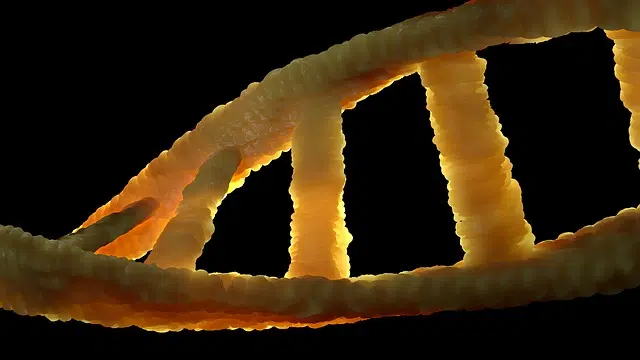
DNA is one of the four major types of biocompounds
Biocompounds are compounds that are part of living organisms . Also known as biomolecules , they are essential for the proper functioning of an organism.
Classification and general characteristics
Nucleic acids (deoxyribonucleic acid or DNA and ribonucleic acid or RNA ), proteins (such as collagen and insulin ), carbohydrates ( sucrose , glucose and others) and lipids ( phospholipids , glycerides ) are the four large types of biocomposites. In them we find substances such as carbon , oxygen , hydrogen , sulfur , phosphorus and nitrogen .
Without biocomposites, life is not possible. Subsistence and reproduction depend on these elements that fulfill various specific functions.
Biocomposites, in short, are biomolecules formed by the combination of bioelements . The primary bioelements are oxygen , carbon, nitrogen and hydrogen. On the other hand, organic biocompounds are synthesized by living beings, unlike inorganic biocompounds .
Organic biocomposites
This concept is also known as an organic molecule and one of its main characteristics is its carbon content, with bonds that also include hydrogen. In several biocompounds of this type we can also observe oxygen, sulfur, boron, nitrogen, halogens and phosphorus , among other elements.
We must not fail to mention that not all carbon compounds are organic biocompounds, as is the case with oxides and carbonates. They can be easily recognized because they can burn, since they belong to the group of combustible compounds .
Although almost all organic biocompounds are produced naturally, some require chemical synthesis , so we can distinguish between natural and artificial ones.
Inorganic biocomposites
They are those that do not always have carbon as a fundamental component, although they are made up of several elements. The most common of all is water . It is correct to affirm that in this group we find almost all the elements that are known.
The formation of an inorganic biocomposite takes place through the combination of different chemical and physical phenomena , such as fusion and electrolysis, among others. We should also include oxygen and solar energy in the list of the agents that participate in its creation. Sodium chloride, ammonia and carbon dioxide are three very abundant examples of these molecules.
carbohydrates
Let's take the case of carbohydrates , also called carbohydrates or carbohydrates . These biocompounds contain oxygen, hydrogen and carbon, in a ratio of two to one in the first two elements.
Carbohydrates are a primary energy source for living beings. Thanks to these biocompounds, present in multiple foods, the body can develop its vital processes.

There is no inorganic biocompound more abundant than water
The proteins
As for proteins , these biocompounds are generated with chains of amino acids in line . Qualified as macromolecules , proteins are key to the life of cells , participating in the transport of oxygen, maintaining homeostasis and protecting the organism, among other issues.
Although all biocomposites of this type carry out very important functions, there are some that perform more than one. For example, we can talk about catalysis , a process that accelerates chemical reactions with the help of a substance called a catalyst .
Catalysis is essential for the body. We can observe it in the degradation of food caused by pepsin, among other cases. On the other hand, we have regulatory functions, in which protein hormones collaborate with the continuity of homeostasis , thanks to which the organism can maintain stability despite external changes. Insulin regulates blood glucose in this way.
